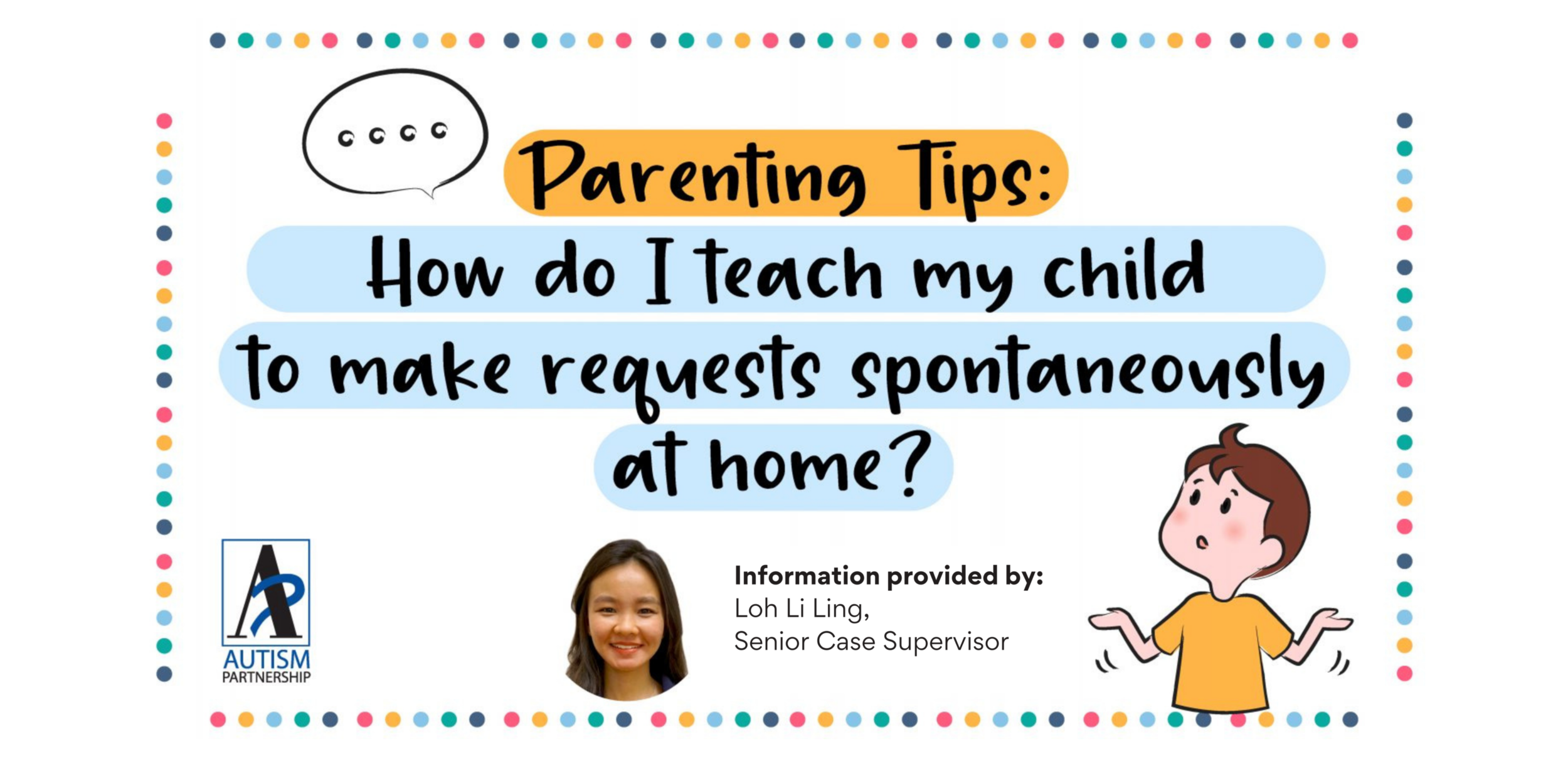Communication & Language Skills for Autism (ASD)
“My child often scrambles and messes up the room while looking for his toys. Sometimes, he would be tugging and pulling me angrily because he could not get what he is looking for. He would then resort to shouting and yelling. How do we get him to ask nicely instead of messing up the room and getting upset?”
— Question from Parent Q&A
Communication is essential and heavily used in our daily life. We will not be able to get by a day without speaking to someone. Being able to communicate helps to reduce confusion and frustration, and therefore children need to be able to express themselves and tell us about their needs. As communication for children with autism may be challenging, we have to set up a situation to practice communicating. One way for our children with autism to learn to request their needs spontaneously is by tempting them to communicate, otherwise known as Communication Temptation.
In this article, our Senior Case Supervisor, Ms. Loh Li Ling, shares with us a step-by-step guide on getting your child to communicate spontaneously.
Step-by-Step Guide
"How do I teach my child with autism to communicate spontaneously at home?"
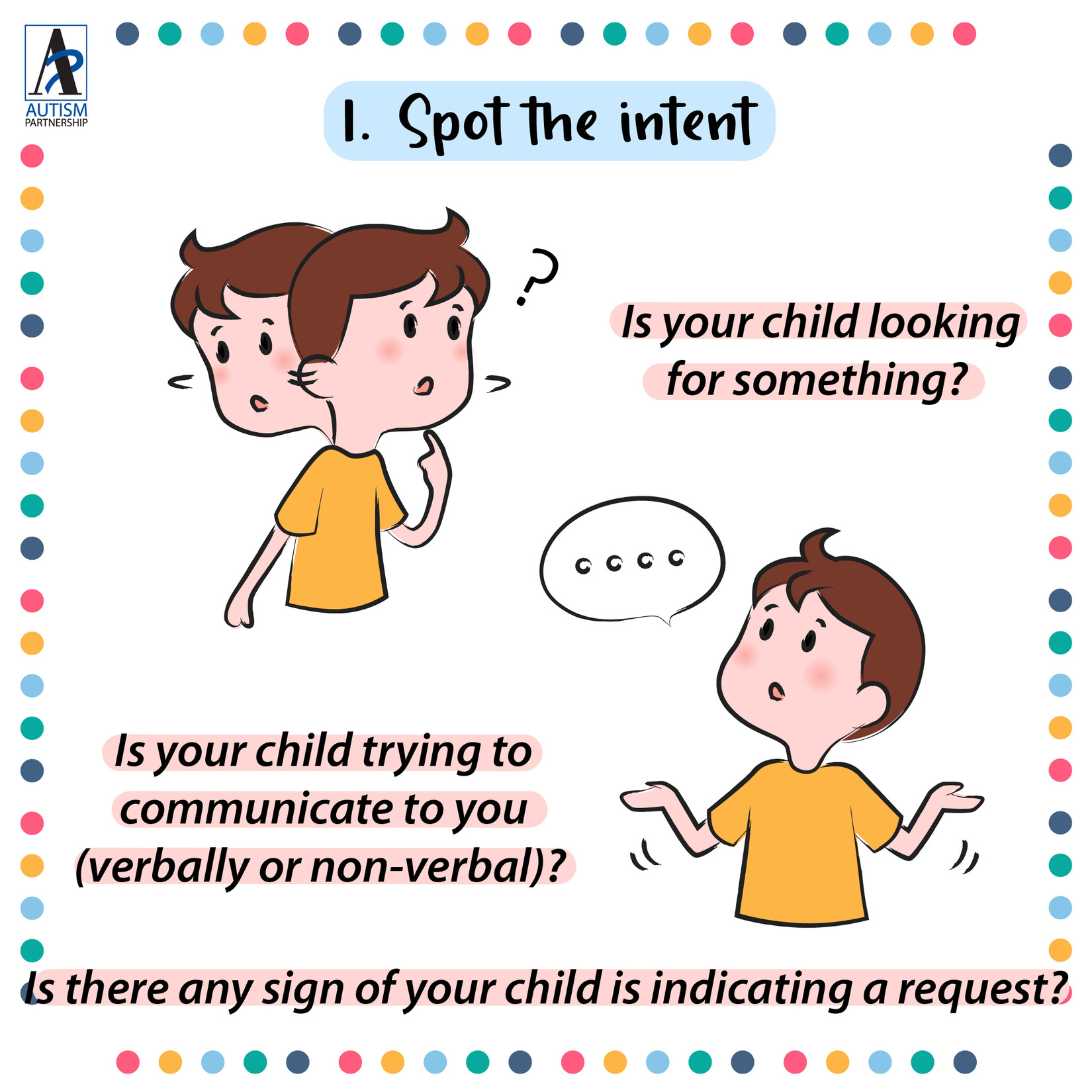
Step 1: Spot the intent
First, we have to spot your child’s intention by looking at the following:
- Is your child looking for something?
- Is your child trying to communicate with you (verbally or non-verbally)?
- Is there any sign that your child is indicating a request?
- Your child may also be looking around, gesturing, or trying to say something to indicate a request.
- Your child may also tug and pull you as a form of asking for help to look for the item.
You can also place a few potential items on the table and see which ones they gravitate towards.
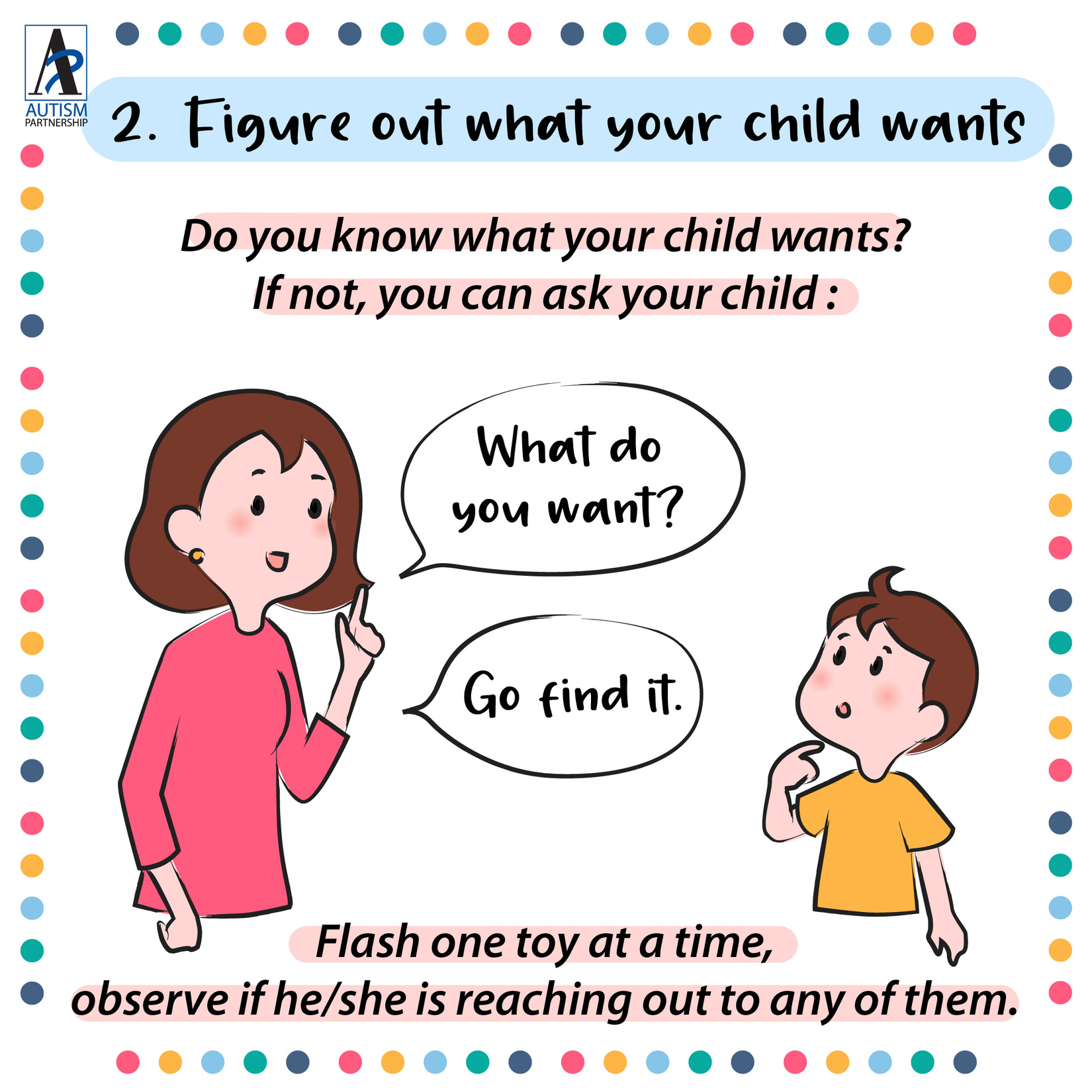
Step 2: Figure out what your child wants
After spotting intent, let’s see if we can figure out what your child wants:
- Do you know what your child wants?
- If you are not sure, you can ask your child, “What do you want?” or “Go find it.”
- You can also nudge your child gently to look for it if you are still unsure what they are looking for.
If your child is not responding to any of the questions, you can flash one toy at a time and observe if they are reaching out to any of them.
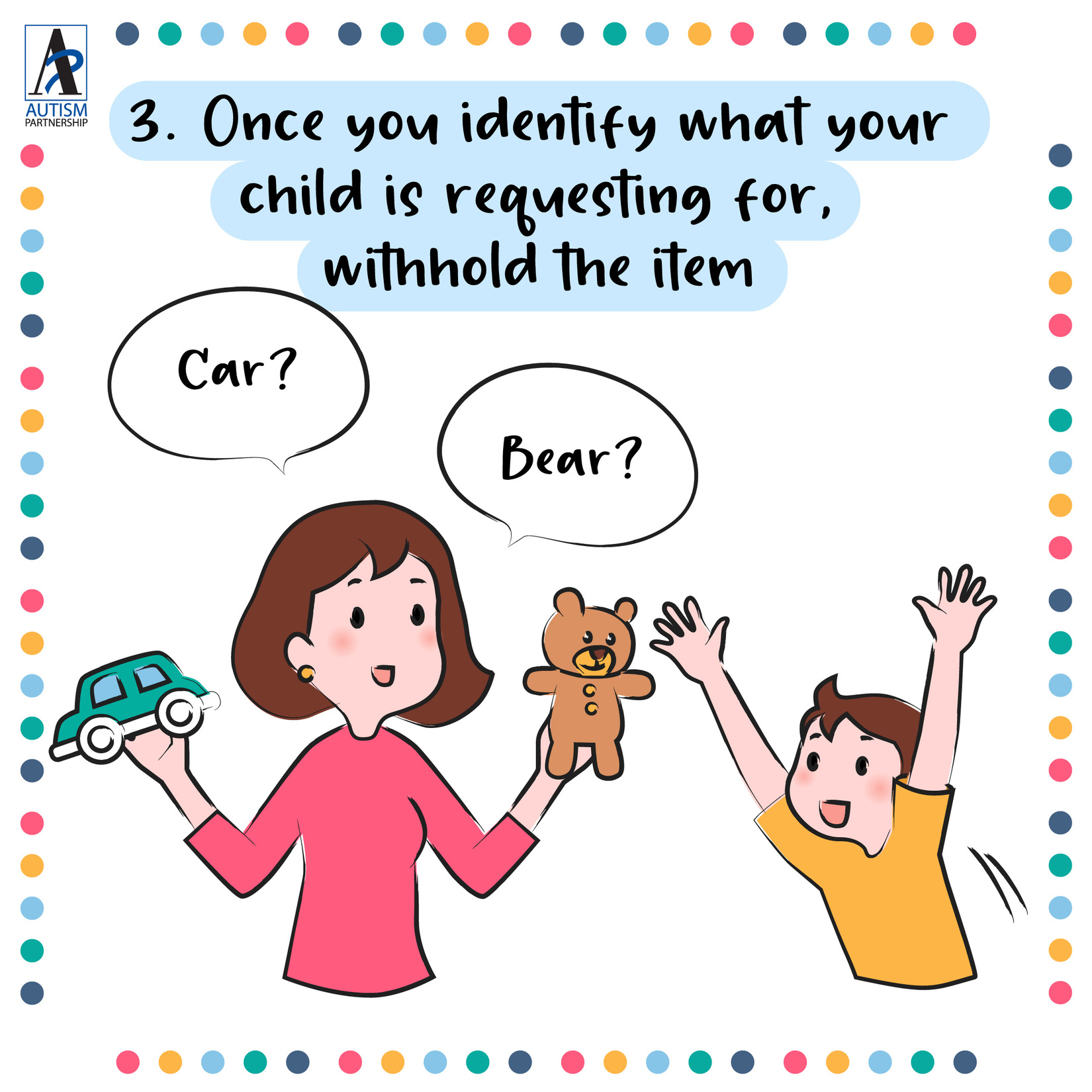
Step 3: Once you identify what your child is requesting for, you can then withhold the item
Once the item has been identified, your child should not have immediate access to the desired item.
If your child can touch the desired item, it may trigger them to snatch, and we will lose the opportunity to practice speaking or using their language to request. Also, snatching can be disruptive, and we do not want our children to pick up this habit.
Hence, when you withhold the desired item, you should keep it in sight but not within reach.

Step 4: Go in with a full verbal prompt
Go in with a full verbal prompt by saying: “I want the (item)”> Your child will repeat after you and say, “I want the (item).”
The “language” that you choose to prompt your child to use is dependent on their language ability. It can range from just eye contact, a single closest approximated sound, a word, a phrase, to a complete sentence.
Accept the closest approximated articulation based on the language capability of your child. Words like “the,” “a,” and other articles may not be so crucial for your child to pick up at the start. We do not want to frustrate them by getting them to re-articulate over and over again all at once.
What is important is to re-articulate the correct phrase and to set up more opportunities for your child to practice requesting. Practice makes perfect!
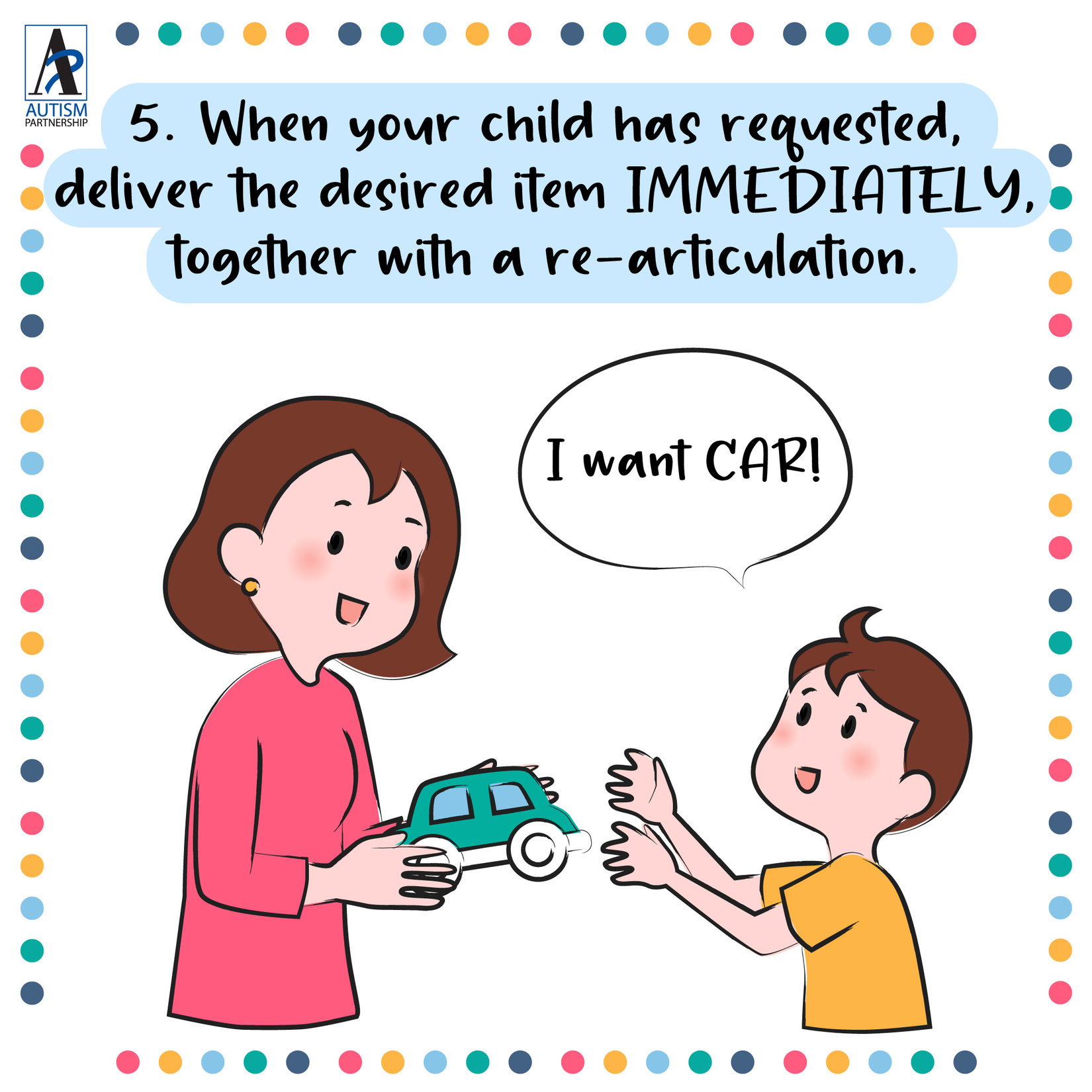
Step 5: When your child has requested, deliver the desired item IMMEDIATELY, together with a re-articulation.
Immediate delivery of the desired item when your child has requested it is important. We want your child to form the association that appropriate communication will lead to the desired outcome.
Delayed delivery may lead to your child not picking up requesting, and they may revert to the disruptive behavior of grabbing and fussing.
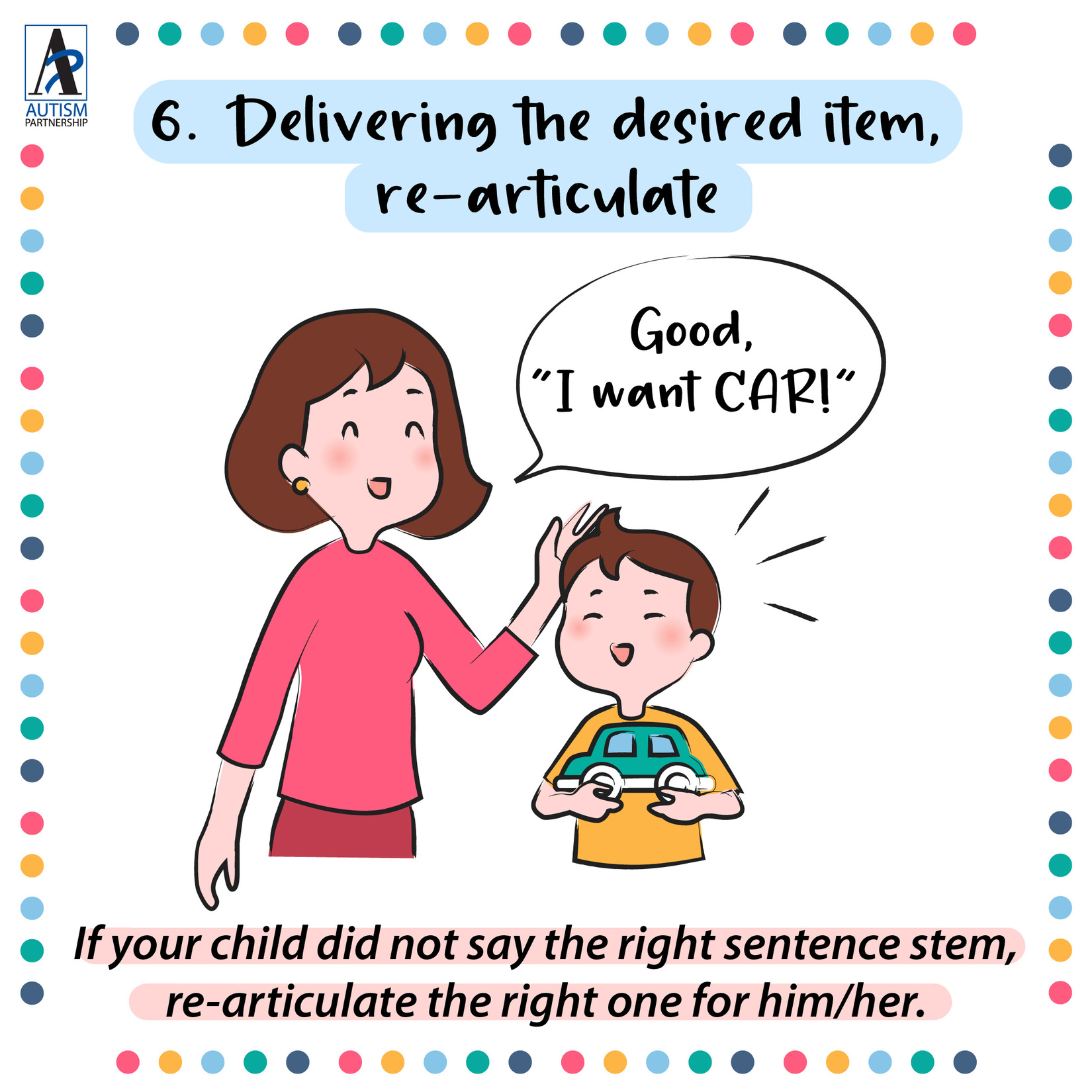
Step 6: When delivering the desired item, re-articulate
While delivering the desired item, re-articulate “I want the (item)” (depending on your child’s language ability).
Re-articulation is for your child to hear the correct pronunciation and words/phrases/sentences that you want your child to pick up.
Your child may or may not pick it up from your re-articulation; however, we want to seize all opportunities for your child to be exposed to the proper form of requesting.
If your child did not say the correct sentence stem, you could re-articulate the right one for them, but your child doesn’t need to repeat after your re-articulation.
Guiding Flow Chart:
Setting up situations for your child to practice requesting
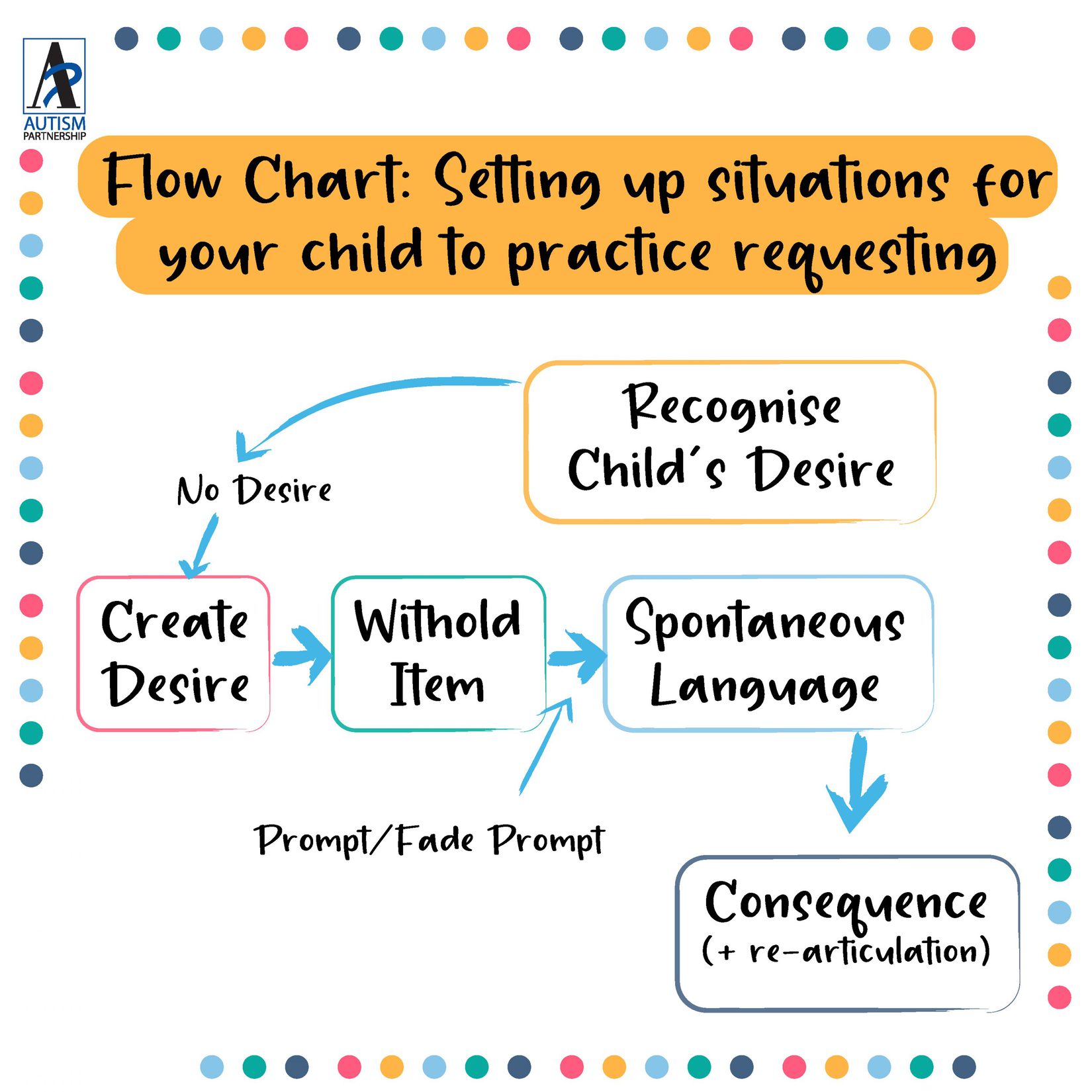
This step-by-step guide requires repeated practice and proactively setting up situations for your child to practice requesting. This means waiting for your child to show intent and purposely setting up the intent.
If they have been fussing, reactively you may want to calmly hold onto them and give them the “language” for him to repeat after you.
Most importantly: Make sure always to observe your child to spot intent. Your observation will help you to find out what your child is looking for, so it is easier for you to think of what language to prompt there and then.

